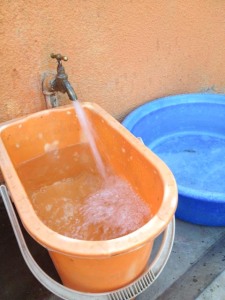Let me start off this report by saying that I never really had the desire to climb Mount Kilimanjaro until after I spoke with a woman who had been to Tanzania. She planted the seed. I started reading about the climb and soon found that I really, really wanted to do it! I saw it as both a physical and a mental challenge. And when would I ever get the chance again?
So, on top of selling our house, moving all of our possessions into a storage facility, laying the foundations for a new business, and packing for a 6-month trip, I added on some training and shopping for the proper gear. I made weekly trips to EMS and REI, and any other outdoor store that has an acronym for its name, to shop the sales. I eventually acquired everything that was on the packing list, except for the rain gear. I would be climbing during the dry season and didn’t want to carry gear that I didn’t need (did you all note the foreshadowing here?).
I can’t stress enough how important it is to find a guide company with positive reviews, a good reputation, etc. I hired a new company owned by a man, let’s call him Michael, who came recommended by the same person who suggested I make the climb. And then the problems began:
- A two-month-long battle over a wire transfer because Michael gave me the wrong bank account number. In the end, it cost me about $100 to recover the money and countless hours on the phone with the bank.
- He provided me with the wrong start date for the climb.
- He phoned me the day before the climb to tell me that my guide would meet me at 4 PM that day to review the climb and check my gear. What he didn’t do later on in the day was call to tell me that the guide needed to reschedule for 9 PM.
- Michael didn’t inform my guide that I am vegetarian so I told him at 10 PM the night before the climb. This meant that I would be eating a lot of side dishes and very little protein.
I did eventually meet with my guide, Hodge, and he really put me at ease. He went through all of my gear and said that I had everything I needed except for a mat, a waterproof poncho, and snacks. He said that there had been a lot of rain on the mountain so the poncho would be necessary. He could arrange for renting the poncho and the mat and we would stop for snacks on the way. Trip on!

Kilimanjaro From My Hotel
I chose the Machame (Match-ah-may) route as it has the highest rate of success and is supposed to be the most scenic. You can choose anywhere from six to eight days to complete your climb on Machame (the length of time is different for each of the six Kilimanjaro routes). I chose seven days as it gave me an extra day to acclimatize.
We arrived at the gate around 10 AM. I wasn’t feeling my best that morning, I was tired and I had a dry cough from allergies, but I thought it would improve once we got underway. Once I was out of the van, Hodge told me to be sure I had everything I needed for the day as the porters would be taking my big bag up and I wouldn’t see it until the end of the day’s hike. I tried to keep my pack as light as possible so I didn’t add anything but the poncho.

One of the reps from the hiking company took me to sign in and make my final payment (the entrance fee is $700 USD). She and I then went into a holding area while the guides and porters arranged all the gear and got it weighed. Each porter is only allowed to carry 30 lbs. each so they weigh each bag. Once the bags are weighed and are cleared to go, the porters hike a short way up the path and reposition all the gear the way they want it at whatever weight they want. It’s pretty interesting!

The Porters Weighing The Bags
I stayed busy by putting on my gators, packing the box lunch the rep had given to me, and filling my Camelback with 3 liters of water. When I started to adjust my hiking poles to the correct length, one of the sections pulled out of the socket! There is a saying on Kilimanjaro, “pole pole” (pronounced “polay polay”). It means pole to pole, or walk slowly. Because I now had only one stick to walk with, I would just say “pole.” “Pole” by itself just doesn’t have the same ring to it.
So we’re off and there’s no going back now! After about 30 minutes, I went from “isn’t this exciting!?” to “oh holy God, what have I done!?” I am a hiker. I enjoy a nice long hike in the woods. But this!? This is straight up. No reprieve. Seven hours. Straight. Up. After about four hours, it started to rain. Biblical rain. No problem for me though, I’m wearing my waterproof hiking shoes and I’ve got that waterproof poncho that was rented for me. When I removed the poncho from its package, I realized that it was basically the same poncho that you buy at Disney World but without the added pizazz of the bright color or the Disney character dressed in Wellies. I was soaked within minutes. Seconds even. I mentioned something to my guide about this and he said that it was because I was sweating under my poncho. I immediately flashed to Albert Brooks in Broadcast News. (If you don’t know what I’m talking about, watch this movie. It is on Amazon Prime.) It was raining so hard that even my Goretex shoes were soaked. Remember when you were a kid and you’d walk in soaking wet shoes and your feet would make that squishing noise? Yeah.

Me Day 1
Without belaboring this tale, here is a summary of Day 1:
- Steep
- Exhausting
- Wet
But after 7 hours, it was over!
I had already experienced the physical challenge I was looking for. Let me tell you, I have never been so exhausted in my life! Luckily, the crew was on the ball. Hodge showed me to my tent. I climbed in, took everything off, and changed into my dry clothes. I snuggled into my sleeping bag liner and, within minutes, had some tea, popcorn, and a few chocolate cookies. I decided that the sleeping bag liner wasn’t going to cut it and added my sleeping bag. It took about an hour, but I warmed up. Dinner was delivered shortly after and I was feeling much better. I had made it through day one under less than ideal conditions. Hodge stopped by to brief me on the next day. He told me that day 2 is actually the hard day. Womp womp! I went to bed thinking that it was apropos that the name of this mountain sounds like Kill-a-man.

Machame Camp (1st Camp)
Day 2
I woke up as the sun was rising. I had an okay night, but I had forgotten that sleeping mats are actually just there to fool you into thinking that you are sleeping on something cushioned. I only woke up twice to use the latrine, but since I had the woods next to me, I didn’t have to actually use the latrine. Good thing. I had used it that morning and found that the woods in broad daylight would have been better. Here in Africa, most of the toilets are what we call “squat toilets.” Yes, you get the picture. Let’s just say that the mzungus (white people) using these toilets did not have very good aim. Okay, moving along. After re-packing my bag, having some breakfast of porridge, an egg, and white bread with peanut butter, we were off.

This Is How I Started Day 2
Guess what! It was steep! Six hours of straight up, wet lava, sometimes what felt like technical rock climbing, but it was fun! I was feeling physically ready for this day and I had no problem completing it. The sun was out for most of the day and I had dressed well (no, not the proper party dress, just the right amount of warmth). There was beautiful scenery all around. Fields of heather and some other gnarly looking plant-life. There were lots of people to chat with along the trail, everyone was in a good mood. Except for the porters. Those poor guys were grunting those parcels up the whole way.

A Kilimanjaro Porter Carrying Up His Load
The only problem I had was that my cough was getting a little worse. My guide kept asking me about it and I told him that it was just from allergies and maybe the dampness from yesterday. So we moved on and made it to camp by 1 PM, piece of cake. Lunch was french fries and a small portion of vegetables. Tasted good but not nearly enough protein. After a rest, we took a walk to the nearby Lemosho Camp. From there we had an incredible view of the Shira Cathedral, the first peak on Kilimanjaro, as well as Uhuru Peak, our ultimate destination.

Shira Cathedral On the Way to Lemosho Camp_3
As we were coming back from that mini-hike, the weather started to change. The wind picked up and the clouds started to form. It was getting cold. I got back into my tent and put my long underwear on. I got into my sleeping bag to wait for dinner. I could hear the larger groups around me having fun in their common tents. I was a bit envious. Dinner was served, a giant plate of white rice with a tomato sauce with green beans. There was tea and a small banana for dessert. I was feeling pretty tired from the day and my cough, so I decided to turn in early.
It was a bad night. The rain and wind pummeled my tent. I think the tea had the same amount of caffeine as a trente coffee at Starbucks, so I was antsy in my coffin-styled sleeping bag. And I was coughing. Seems like coughing begets coughing and that’s what happened to me. By the time morning hit I had little sleep, a raging headache, I was nauseous and my cough was wet. I knew this was it for me. When Hodge came by to check on me I told him about my night. He asked if I thought I could get through with the cough and I told him I thought my asthma might be kicking in. His eyes got wide. “You have asthma?” he asked. I guess I was supposed to mention that. I had contacted my doctor before signing up for the hike and he didn’t see a problem with it. Hodge felt otherwise and ended my climb.

The Porters Packing up Shira Camp
Once we had breakfast and I had packed up, we went over to the ranger station. There is a car road about a 45-minute hike away and he arranged for a pickup. They were busy that day. Thirty people in all had to come down. We had to wait an hour before we started hiking. As I was waiting, three more hikers showed up to be taken down as well.
The hike down was not strenuous, except maybe for the porter who had to piggy-back a girl with a mild pulmonary embolism (said her nurse friend). Once we got to the road, we waited another hour for the car. Nine of us climbed into a Jeep truck and were driven down the mountain. We were dropped at the Lemosho gate and waited for a second truck. This one took an hour to get us to the road to Moshi where we waited for our rides from our hiking companies. I was pretty ready to get all of my cold weather gear off as it was now about 85 degrees.
So, that’s it. I hiked Kilimanjaro for two days. As I write this, the other people making the same trek are most likely freezing in their tents, resting for their summit climb. I’ve added my itinerary below so you can get an idea of what the other days are like for this particular trek. I am glad I tried, not glad that I spent a lot of money for a 2-day hike, but I do feel better for the experience. Will I go back and try it again sometime? No way! But that doesn’t mean that you shouldn’t!
Here are my favorite images from the trip.
(If you click the first one you can see them all larger as a slide show.)

Kilimanjaro From My Hotel

Machame Gate

Kilimanjaro Slopes_2 Day 2

Gnarly Vegetation on Kilimanjaro

Kilimanjaro Slopes_4 Day 2

Gladiola

The Long Trek Up (Can You See All The People)

KIlimanjaro Slopes_7 Day 2

Cool Vegetation

It’s Straight Up!

Another Shot Of the Long Trek Up

Anyone Need a Bathroom?

Shira Cathedral-The First Peak on Kilimanjaro

My Tent on Kilimanjaro

Shira Cathedral On the Way to Lemosho Camp_2

Shira Cathedral On the Way to Lemosho Camp

It Looks Big and Far!

Uhuru Peak-Our Destination
The Official 7-Day Machame Itinerary
DAY 1
•Machame Gate to Machame Camp
•Elevation (ft): 5,400ft to 9,400ft
•Distance: 11 km
•Hiking Time: 5-7 hours
•Habitat: Rain Forest
The drive from Moshi to the Mount Kilimanjaro National Park Gate takes about 50 minutes. The journey passes through the village of Machame which is located on the lower slopes of the mountain.
We now leave the park gate and walk through the rain forest on a winding trail up a ridge. Lower down, the trail can be muddy and slippery. Gaiters and trekking poles are a good idea here. We continue a short distance until we reach the Machame Camp.
DAY 2
•Machame Camp to Shira Camp
•Elevation (ft): 9,400ft to 12,500ft
•Distance: 5 km
•Hiking Time: 4-6 hours
•Habitat: Moorland
After breakfast, we leave the glades of the rain forest and continue on an ascending path, crossing the little valley walking along a steep rocky ridge, covered with heather, until the ridge ends. The route now turns west onto a river gorge. Time for rest, dinner, and overnight at the Shira campsite.
DAY 3
•Shira Camp to Lava Tower to Barranco Camp
•Elevation (ft): 12,500ft to 13,000ft
•Distance: 10 km
•Hiking Time: 6-8 hours
•Habitat: Semi Desert
From the Shira Plateau, we continue to the east up a ridge, passing the junction towards the peak of Kibo. As we continue, our direction changes to the South East towards the Lava Tower, called the “Shark’s Tooth.” Shortly after the tower, we come to the second junction which brings us up to the Arrow Glacier at an altitude of 16,000ft. We now continue down to the Barranco Hut at an altitude of 13,000ft. Here we rest, enjoy dinner, and overnight. Although you end the day at the same elevation as when you started, this day is very important for acclimatization and will help your body prepare for summit day.
DAY 4
•Barranco Camp to Karanga Camp
•Elevation (ft): 13,000ft to 13,100ft
•Distance: 5 km
•Hiking Time: 4-5 hours
•Habitat: Alpine Desert
After breakfast, we leave Barranco and continue on a steep ridge passing the Barranco Wall, to the Karanga Valley campsite. This is a short day meant for acclimatization.
DAY 5
•Karanga Camp to Barafu Camp
•Elevation (ft): 13,100ft to 15,300ft
•Distance: 4 km
•Hiking Time: 4-5 hours
•Habitat: Alpine Desert
After breakfast, we leave Karanga and hit the junction which connects with the Mweka Trail. We continue up to the Barafu Hut. At this point, you have completed the South Circuit, which offers views of the summit from many different angles. Here we make camp, rest, enjoy dinner, and prepare for the summit day. The two peaks of Mawenzi and Kibo are to be seen from this position.
DAY 6
•Barafu Camp to Summit to Mweka Hut
•Elevation (ft): 15,300ft to 19,345ft (and down to 10,000ft)
•Distance: 5 km ascent / 12 km descent
•Hiking Time: 7-8 hours ascent / 4-6 hours descent
•Habitat: Arctic
Very early in the morning (midnight to 1am), we continue our way to the summit between the Rebmann and Ratzel glaciers. You head in a northwesterly direction and ascend through heavy scree towards Stella Point on the crater rim. This is the most mentally and physically challenging portion of the trek.
At Stella Point (18,600 ft), you will stop for a short rest and will be rewarded with the most magnificent sunrise you are ever likely to see (weather permitting). From Stella Point, you may encounter snow all they way on your 1-hour ascent to the summit. At Uhuru Peak, you have reached the highest point on Mount Kilimanjaro and the continent of Africa. Faster hikers will see the sunrise from the summit.
From the summit, we now make our descent continuing straight down to the Mweka Hut camp site, stopping at Barafu for lunch. You will want gaiters and trekking poles for the loose gravel going down. Mweka Camp is situated in the upper forest and mist or rain can be expected in the late afternoon. Later in the evening, we enjoy our last dinner on the mountain and a well-earned sleep.
DAY 7
•Mweka Camp to Moshi
•Elevation (ft): 10,000ft to 5,400ft
•Distance: 10 km
•Hiking Time: 3-4 hours
•Habitat: Rain Forest
After breakfast, we continue the descent down to the Mweka Park Gate to receive your summit certificates. At lower elevations, it can be wet and muddy. Gaiters and trekking poles will help. Shorts and t-shirts will probably be plenty to wear (keep rain gear and warmer clothing handy).
From the gate, you continue another hour to Mweka Village. A vehicle will meet you at Mweka village to drive you back.
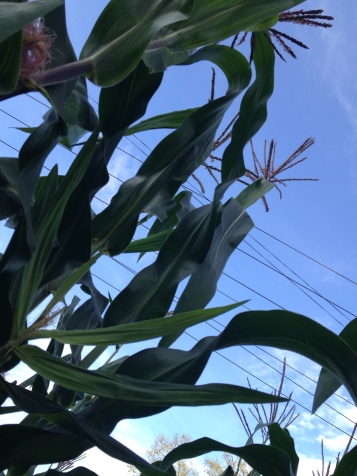 Arusha on a bright, sunny day. A little girl smiles at me so I smile and wave to her. Within seconds, I am lying in a corn field, holding onto my laptop bag as my assailant drags me, pulling harder and harder on the strap. All the while I am thinking, you are not getting my bag. But then he does.
Arusha on a bright, sunny day. A little girl smiles at me so I smile and wave to her. Within seconds, I am lying in a corn field, holding onto my laptop bag as my assailant drags me, pulling harder and harder on the strap. All the while I am thinking, you are not getting my bag. But then he does. wrist. I am sore. I am feeling all of my 47 years. My clothes are stained. My laptop, Kindle, raincoat, keys, license, credit cards and eyeglasses were in my bag.
wrist. I am sore. I am feeling all of my 47 years. My clothes are stained. My laptop, Kindle, raincoat, keys, license, credit cards and eyeglasses were in my bag.
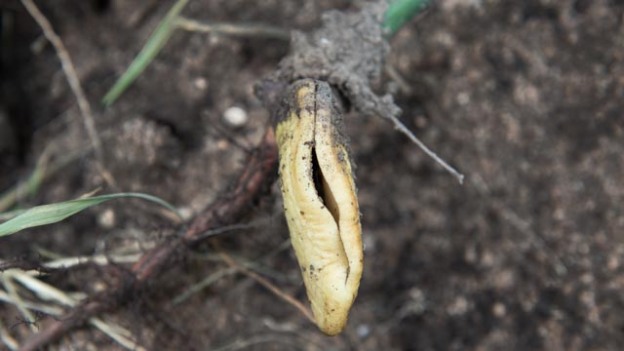




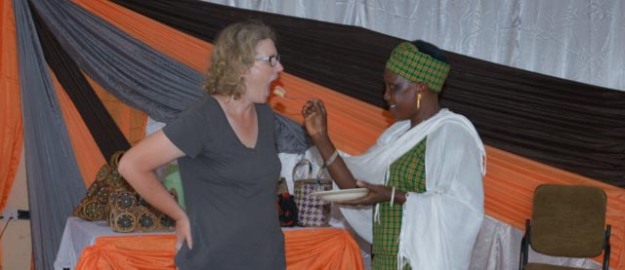


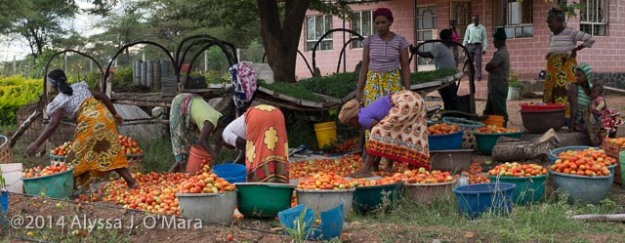

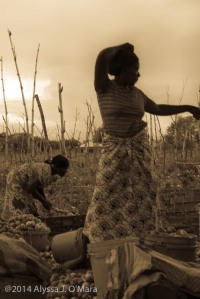


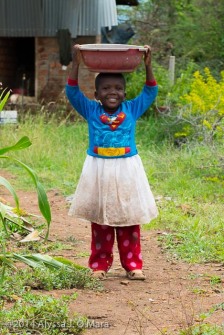









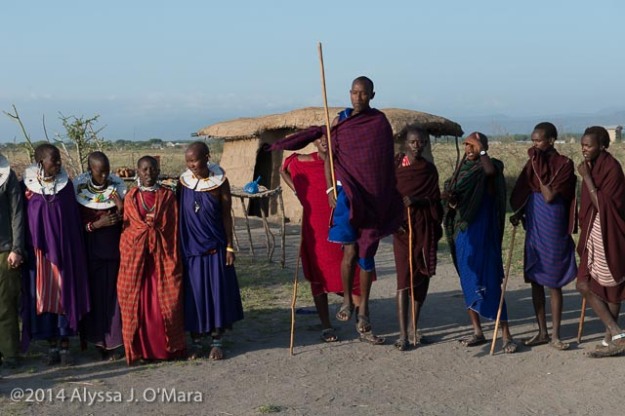

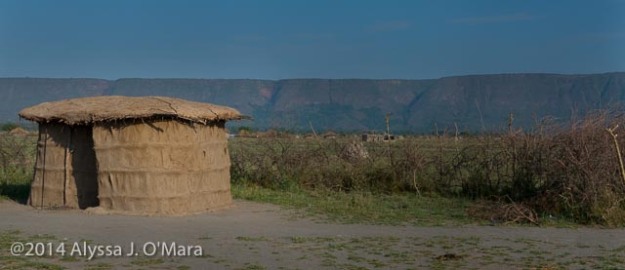

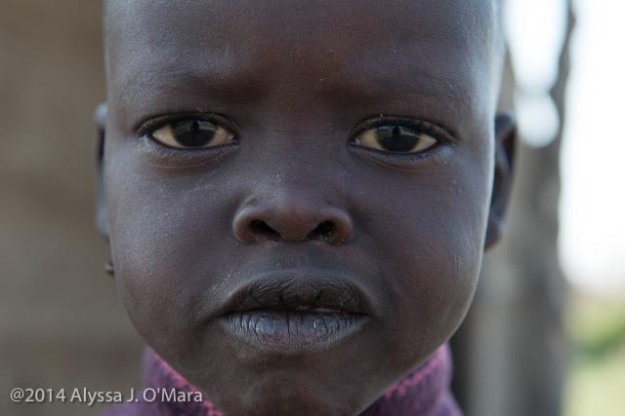








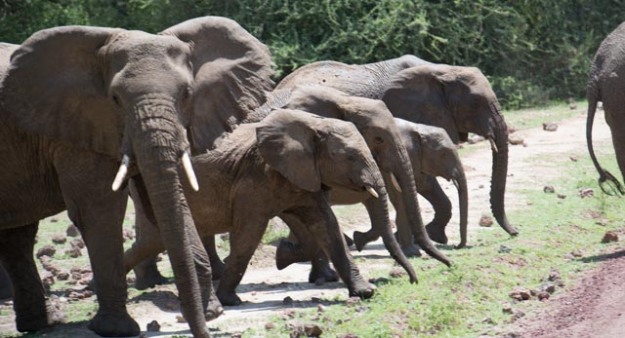







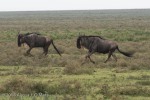



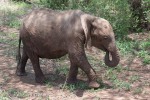






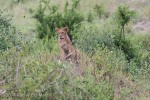























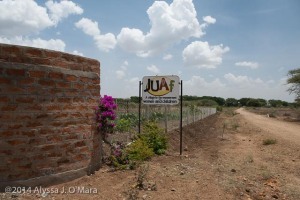

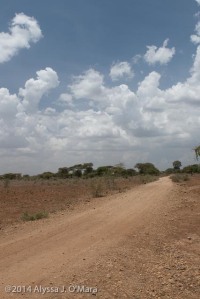

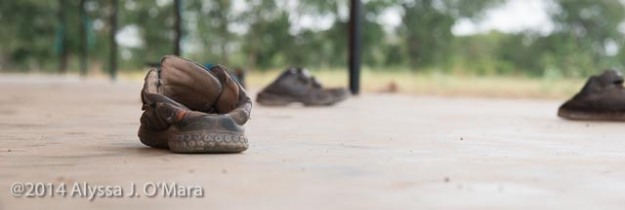

 Somewhere around 3 AM this morning I remembered that I haven’t introduced you yet to my neighbor in the back. I was then reminded at about 4 AM. Then again around 6:30. I have never met him in person myself, so I call him Shetani. This means Satan in Swahili.
Somewhere around 3 AM this morning I remembered that I haven’t introduced you yet to my neighbor in the back. I was then reminded at about 4 AM. Then again around 6:30. I have never met him in person myself, so I call him Shetani. This means Satan in Swahili.



























